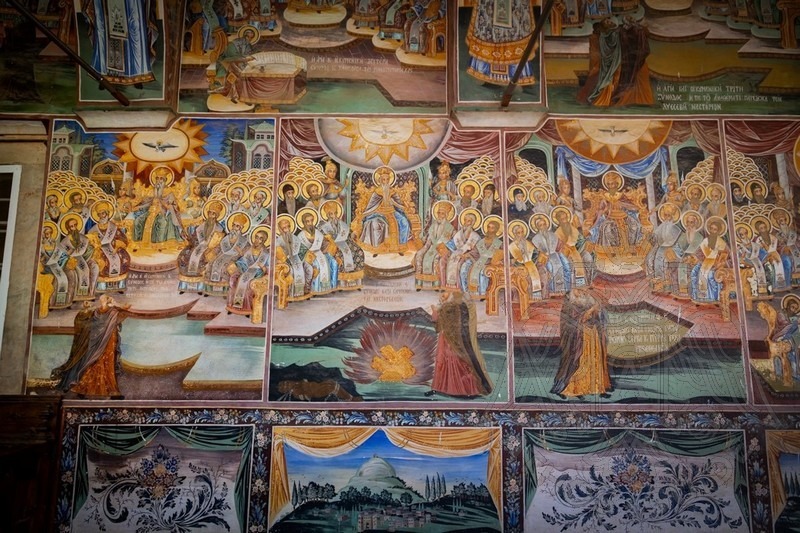
The Feast of Orthodoxy (also called Sunday of Orthodoxy or Triumph of Orthodoxy) is celebrated on the first Sunday of the Great Lent. It is one of the most significant feasts of the Orthodox Church, as it celebrates the triumph of the holy icons, while it also highlights the doctrinal truth of our faith. It is a feast dedicated to the victory over iconoclasm and the restoration of the holy relics..jpg)
In this article we will examine:
- What is the historical background of this feast?
- Why do we venerate icons?
- What is the theological significance of representations?
Historical Background
The period of iconoclasm was one of the most turbulent and challenging eras in the history of the Byzantine Empire. Theological and political disputes led to conflicts that not only threatened the Orthodox faith and worship but also placed a significant schism on the society.
The controversy began in 726 AD when the Emperor Leo III the Isaurian (r. 717–741 AD) initiated radical reforms. Among other measures, he prohibited the veneration of the holy icons, arguing that many Christians were being misled into idolatry, thereby deviating from the Orthodox doctrine. This led to the destruction of sacred icons and relics, as well as to violent clashes between iconoclasts (opponents of icons) and iconophiles (supporters of icons). These conflicts resulted in recurrent persecutions and social unrest.
The Seventh Ecumenical Council, convened in 787 AD in Nicaea, affirmed the legitimacy of depicting holy figures and established the theological basis for icon veneration. However, iconoclasm persisted under subsequent emperors who continued to enforce iconoclastic policies. It was not until 843 AD, under the rein of Empress Theodora, that the veneration of icons was definitively restored, marking the final triumph of Orthodoxy.
Theological Approach
As defined by the Ecumenical Councils and articulated in the writings of the great Fathers of our Church, the veneration of icons is not directed at the material object itself but at the person represented. This distinction is crucial in differentiating Christian icon veneration from idolatry. Saint Basil the Great emphasizes this point:
"The honour given to the icon passes to the prototype." (Basil the Great, P.G. 32, 149)
Similarly, Saint John of Damascus states that we do not worship icons for themselves, but we honor what they represent. (John of Damascus, P.G. 94, 1356)
The rigorous theological approach of the Church Fathers contradicted the iconoclasts' objections, which led to a misunderstanding of the relationship between material representations and divine realities. Additionally, their teachings reinforced the core doctrine of Christianity, the Incarnation of Christ. The Incarnate Word of God, through His historical presence, made His depiction not only possible but also theologically justifiable.
.jpg) On the Sunday of Orthodoxy, the Church celebrates both the veneration of holy icons and the victory of Orthodoxy over heretical interpretations of Christian doctrine. Iconoclasm was leading toward an abstract and incomplete understanding of Christianity by denying all material representations. It led to theological distortions and misinterpretations of the Christian faith.
On the Sunday of Orthodoxy, the Church celebrates both the veneration of holy icons and the victory of Orthodoxy over heretical interpretations of Christian doctrine. Iconoclasm was leading toward an abstract and incomplete understanding of Christianity by denying all material representations. It led to theological distortions and misinterpretations of the Christian faith.
Today, we are called to uphold the Orthodox doctrine by honoring our tradition and the spiritual heritage of the Fathers of our Church. Through their unwavering commitment to Christian principles, they affirmed the unity of the material and spiritual dimensions of existence, enabling us to engage meaningfully with God.
Liturgical Texts
The Apolytikion of the Sunday of Orthodoxy highlights the theological significance of the Incarnation and the veneration of Christ’s image:
Apolytikion
Oh Christ our God, begging forgiveness of our sins, we venerate your pure image Oh Good One. Of Your own will You condescended to ascend upon the Cross in the flesh and delivered those you created from the bondage of the enemy. Wherefore, thankfully we cry out: When You came to save the world You filled all things with joy, Oh our Savior.
During the procession of holy icons, we also chant:
“Who is so great a god as our God? For You are the God, Who alone does wonders.”
Through those hymns, it is affirmed and celebrated the doctrinal significance of the Sunday of Orthodoxy.
May the Lord, through the prayers of our patroness, the Virgin Mary, bless you all in this joyous celebration of the Sunday of Orthodoxy!
